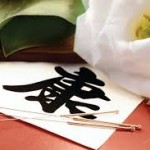 Chinese medical ideas about the immune system have been developing for over for two thousand five-hundred years. Many people in the community know at least some of these theories, such as ‘yin and yang’, ‘heaven earth and man’, the ‘four levels’, the ‘five elements’, the ‘six divisions’ and the ‘eight principles’.
Chinese medical ideas about the immune system have been developing for over for two thousand five-hundred years. Many people in the community know at least some of these theories, such as ‘yin and yang’, ‘heaven earth and man’, the ‘four levels’, the ‘five elements’, the ‘six divisions’ and the ‘eight principles’.
Although Chinese medicine retained religious and magical elements for many centuries, at some point diagnosis and practitioners were set free from these controls and Chinese medicine evolved into an independent system based on a structured philosophy that can be approached from many different angles in order that practitioners can obtain the best results possible in terms of health for those who are unwell.
One of the essential principles of TCM is that the inside and the outside of the body are linked by a continual flow of energy, blood, and fluids that travels via a complex network of meridians and vessels. The well-known Yin-Yang principle says that yin organs and yang organs have paired relationships, for example the colon and the lungs. We are also taught that there are different forms of disease broadly categorized as wind, cold, damp, dryness, heat, summer-heat that effect the yang and/or yin organs.
In terms of immunity the ‘four levels’ says that we have a Defensive level, a Qi level, a Nutritive level and a Blood level, and that certain external pathogens enter and progress through these stages. Of course there are also organs that are more slowly associated with immunity in TCM such as the lungs, liver and spleen.
But in this blog I thought you might find the concept of the ‘six divisions’ interesting, because it helps us understand both immunity and how we ‘fall’ sick. Here they are;
Tai Yang (Bladder / Small intestine)
Shao Yang (Gallbladder / San Jiao)
Yang Ming (Large intestine / Stomach)
Tai Yin (Lung / Spleen)
Shao Yin (Kidney / Heart)
Jue Yin (Liver / Pericardium)
These levels work from the outside, Tai Yang, to the inside, Jue Yin, to help prevent and ward off diseases attempting to travel deep into the body. Each of these levels is identified by certain symptoms, pulse states and tongue pictures. For example the common cold, entering at the Tai Yang level, presents with symptoms such as fevers, slight chills, aversion to cold and neck pain, with a floating pulse and little pulse change. Your practitioner may call this an attack of wind or of wind-cold. The Shao Yang level presents a different pattern of symptoms, so practitioners will be very interested to define these symptoms as they present on the day of your treatment.
If all of these levels are functioning well, external pathogens such as virus’s and bacteria should be prevented from descending from one level to the next. Those of us who have a strong ‘wei’ energy should be able to recover quite quickly from an external attack.
However, vulnerabilities can prevent our immune system from functioning adequately; most human beings have an ‘Achilles heel’, or two, in relation to their general health and level of immunity. For example, you often hear the expressions ‘It went straight into my lungs’, “I just can’t shift it”, “I can’t get rid of the pain in my muscles” and “It’s gone into my bones.” The job of a TCM practitioner is to identify the symptoms and feel as confident as they can about which pattern or patterns are presenting. Then if you are an acupuncturist you can use certain points and therapeutic principles to resolve the condition, maintain the defensive aspect of the lungs as well as releasing pathogens from the external level of the body. A stomach bug will affect the Yang Ming and has mostly differing symptoms as we know well.
It gets a little complicated and very detailed especially if there are underlying weaknesses, and sometimes people may choose to take herbs as well as use acupuncture. However, I hope I’ve given you a small insight into an ancient concept that has been carried forward to the modern day.
There are all sorts of other applications of the ‘6 division’ theory for both TCM practitioners and the Western Medical system. As TCM practitioners we are often requested to work with chronic disease and this system often comes to our minds because as chronic disease improves, frequently other symptoms appear, that are more external, and usually less dangerous and resolve rapidly. At a recent western medical cancer event I heard with interest that the way forward may be to focus on the immune system in the treatment of cancers. Of course it makes absolute sense to TCM practitioners to strengthen and protect the underlying functions of the body that relate to the immune system in these cases.
As a final thought, there are of course many inherited illness’s but in Chinese medicine some of these may be seen as retained pathogens ( for example last years bug that you couldn’t shake off) and treated as such by both herbs and acupuncture. These pathogens have been retained because at the time the body did not have the strength or ability to resolve them.
So as we enter winter keep warm, rest as much as possible, swap your salads for soups and other warming foods, access your complementary practitioners to help you stay strong (if you are feeling under the weather) and most of all enjoy the early nights.





